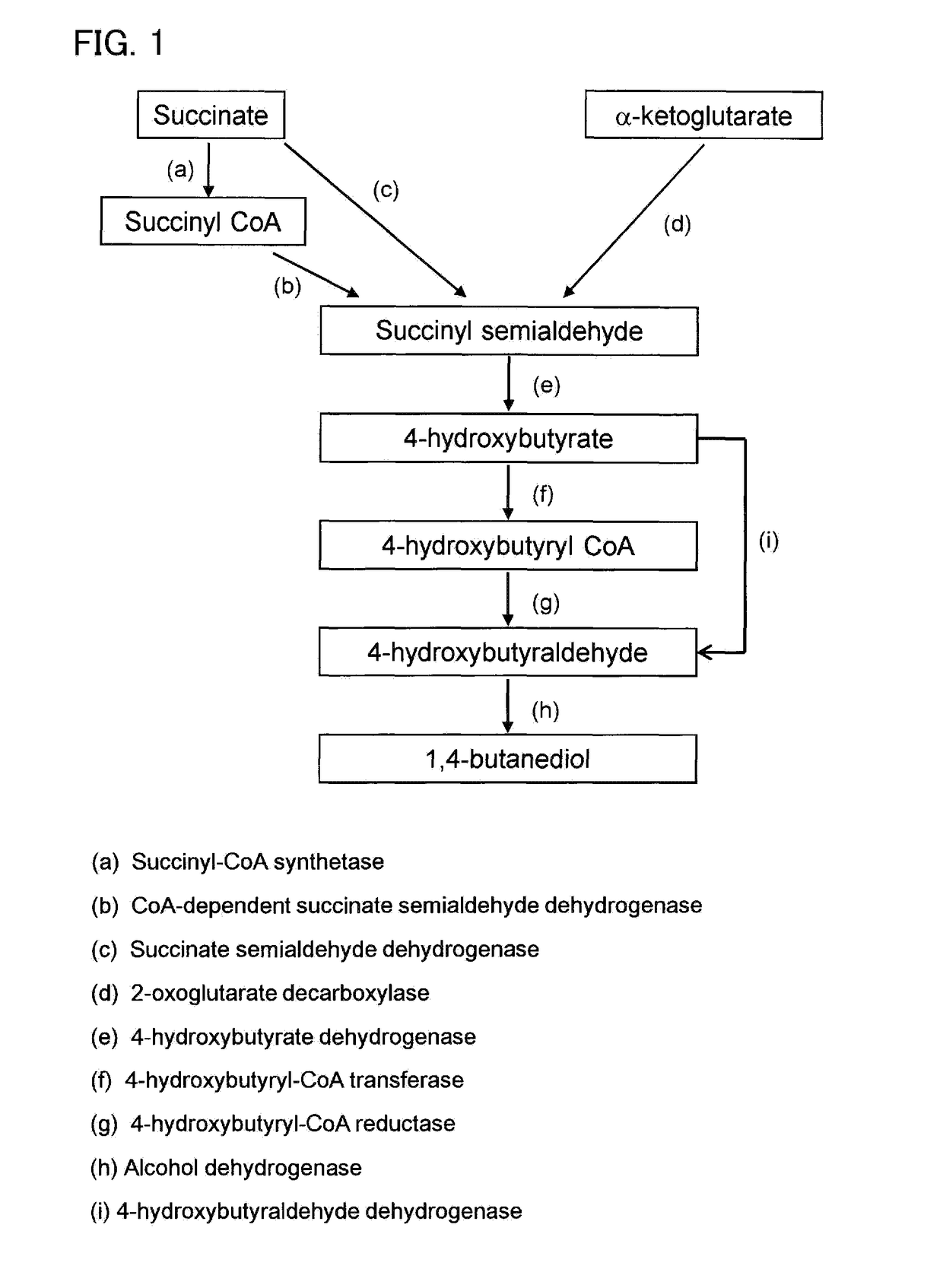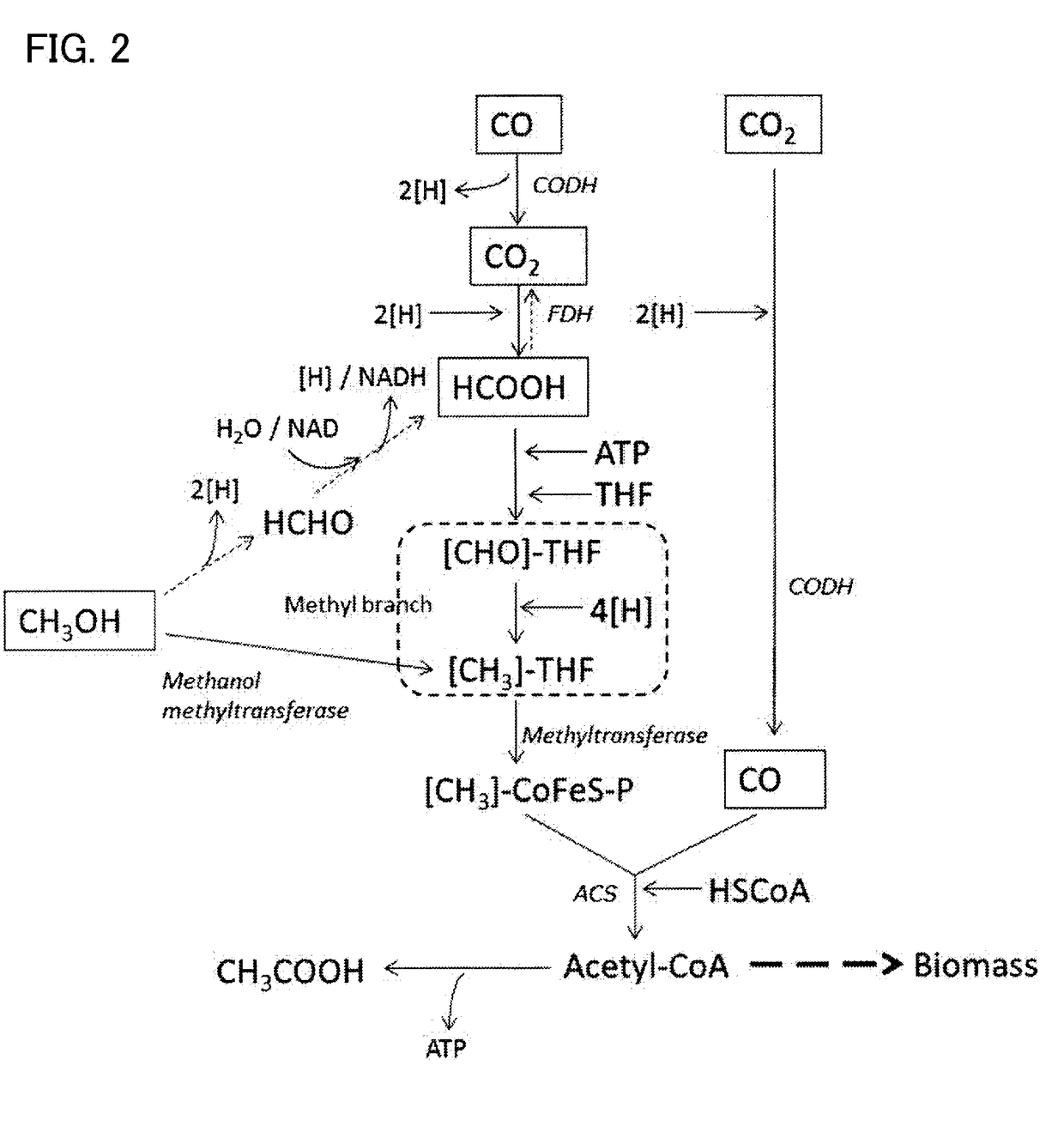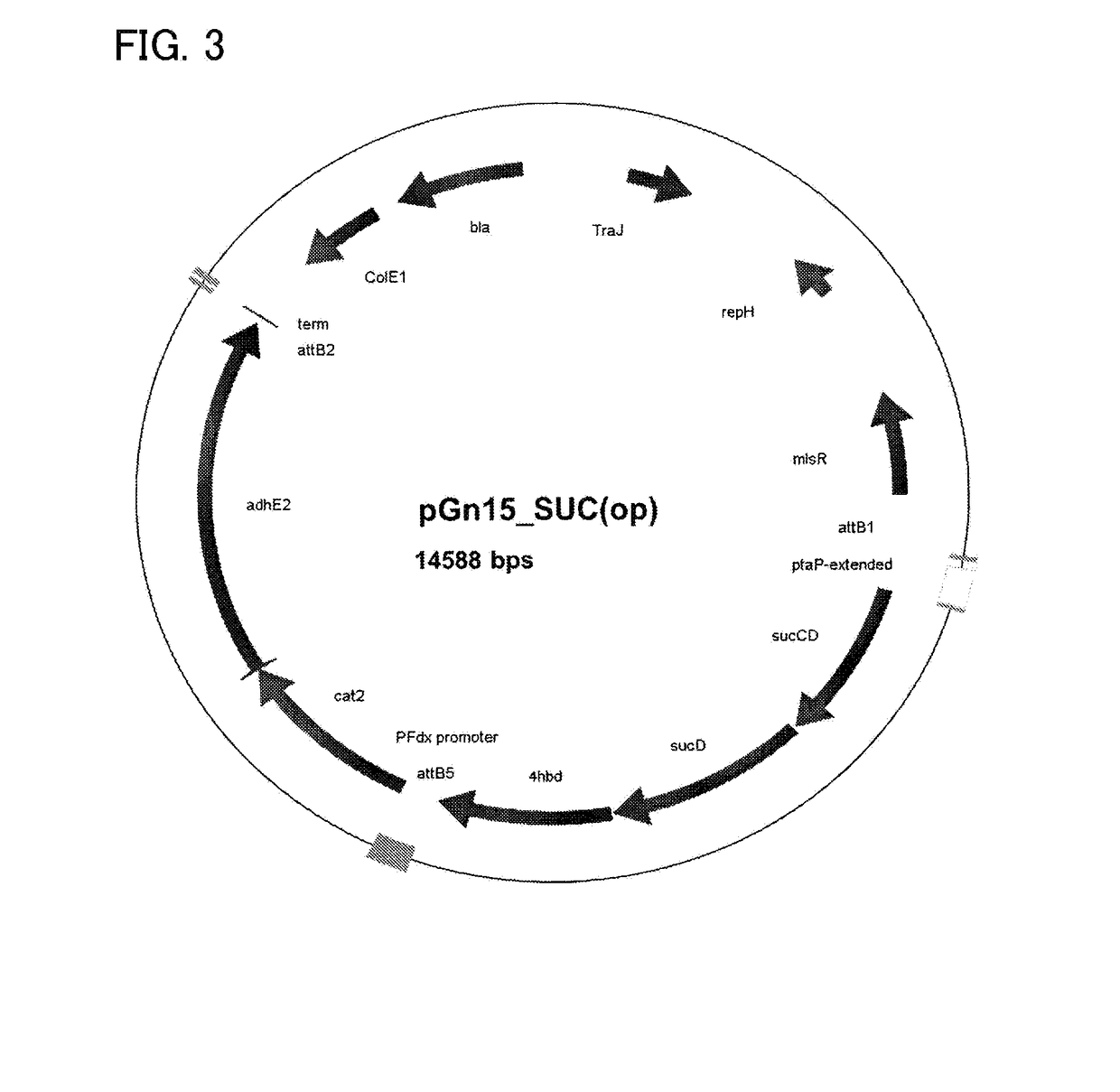Recombinant cells, method for producing recombinant cells, and method for producing 1,4-butanediol
a technology of recombinant cells and recombinant cells, which is applied in the field of recombinant cells, can solve the problems of insufficient carbon sources of microorganisms, insufficient amounts of currently available saccharides, glycerin and oil components derived from plant resources, and the like, and achieves the effects of reducing the production cost of recombinant cells, and reducing the production cos
- Summary
- Abstract
- Description
- Claims
- Application Information
AI Technical Summary
Benefits of technology
Problems solved by technology
Method used
Image
Examples
example 1
[0170]1,4-BDO Production by Syngas Utilizing Bacterium C. ljungdahlii (Succinate Pathway)
[0171]Clostridium / E. coli shuttle vector pGn15_SUC(op) (SEQ ID NO: 1, FIG. 3.) was introduced into C. ljungdahlii by electroporation (performed with a BioRad Micropulser (BioRad, Hercules, Calif., USA) at 0.63 kV) and the transformants were collected on YTF agar plates (YTF-medium containing per liter, 16 g tryptone, 10 g yeast extract, 4 g NaCl, 2 mM L-cysteine supplemented with 1% Xylose plus 1.5% agar).
[0172]For the electroporation the following protocol was used. All work was always performed under strictly anaerobic conditions and, except the centrifugation steps and the storage of the cryocultures, inside the Whitley Anaerobic Workstation A55 (Don Whitley Scientific Limited, United Kingdom) with the gas composition 10% CO2, 5% H2 and 85% N2. Clostridium ljungdahlii strain (DSM No.: 13528) was ordered from DSMZ (Deutsche Sammlung von Mikroorganismen und Zellkulturen) and received as freeze ...
example 2
[0187]1,4-BDO Production by Syngas Utilizing Bacterium Clostridium ljungdahlii (α-Ketoglutarate Pathway)
[0188]Clostridium / E. coli shuttle vector pGn15_AKG (op) (SEQ ID NO: 2, FIG. 4) was introduced into C. ljungdahlii by electroporation (performed with a BioRad Micropulser (BioRad, Hercules, Calif., USA) at 0.63 kV) and the transformants were collected on YTF agar plates (YTF-medium containing per liter, 16 g tryptone, 10 g yeast extract, 4 g NaCl, 2 mM L-cysteine supplemented with 1% Xylose plus 1.5% agar). The vector pGn15_AKG(op) includes 1,4-BDO synthesizing gene cluster (FIG. 4) encoding α-ketoglutarate decarboxylase (sucA from Mycobacterium bovis), 4-hydroxybutyrate dehydrogenase (4hbd from Porphyromonas gingivalis), 4-hydroxybutyryl CoA transferase (cat2 from Porphyromonas gingivalis), and bifunctional 4-hydroxybutyryl CoA reductase and alcohol dehydrogenase (adhE2 from Clostridium acetobutylicum). The collected transformants were named CLJU_pGn15_AKG(op).
[0189]The transforma...
example 3
[0193]1,4-BDO Production by Cellulolytic Bacterium Clostridium cellulolyticum (Succinate-Pathway)
[0194]Clostridium / E. coli shuttle vector, pM9_SUC(op) (SEQ ID NO: 3, FIG. 5) was introduced into C. cellulolyticum by electroporation (at 1.6 kV) and transformants were collected on CM3 agar plates (1.3 g L−1 (NH4)2 SO4, 1.5 g L−1 KH2PO4, 2.9 g L−1 K2HPO4×3 H2O, 0.2 g L−1 MgCl2×6 H2O, 75.0 mg L−1 CaCl2×2 H2O, 1.25 mg L−1 FeSO4×7 H2O, 1.0 mL L−1 trace element solution SL-10, 1.0 mg L−1 Resazurin, 2.0 g L−1 yeast extract, 2.5 g L−1 Na2CO3, 0.5 g L−1 L-cysteine-HCL×H2O, 6.0 g L−1 D-cellobiose and 15.0 g L−1 agar). The vector pM9_SUC(op) includes 1,4-BDO synthesizing gene cluster (FIG. 5) encoding succinyl CoA synthetase (sucCD from Escherichia coli), CoA dependent succinate semialdedhyde dehydrogenase (sucD from Clostridium kluyveri), 4hbd from Porphyromonas gingivalis, cat2 from Porphyromonas gingivalis, and adhE2 from Clostridium acetobutylicum. The collected transformants were named CCE_...
PUM
| Property | Measurement | Unit |
|---|---|---|
| Electric charge | aaaaa | aaaaa |
| Solubility (mass) | aaaaa | aaaaa |
Abstract
Description
Claims
Application Information
 Login to View More
Login to View More - R&D
- Intellectual Property
- Life Sciences
- Materials
- Tech Scout
- Unparalleled Data Quality
- Higher Quality Content
- 60% Fewer Hallucinations
Browse by: Latest US Patents, China's latest patents, Technical Efficacy Thesaurus, Application Domain, Technology Topic, Popular Technical Reports.
© 2025 PatSnap. All rights reserved.Legal|Privacy policy|Modern Slavery Act Transparency Statement|Sitemap|About US| Contact US: help@patsnap.com



